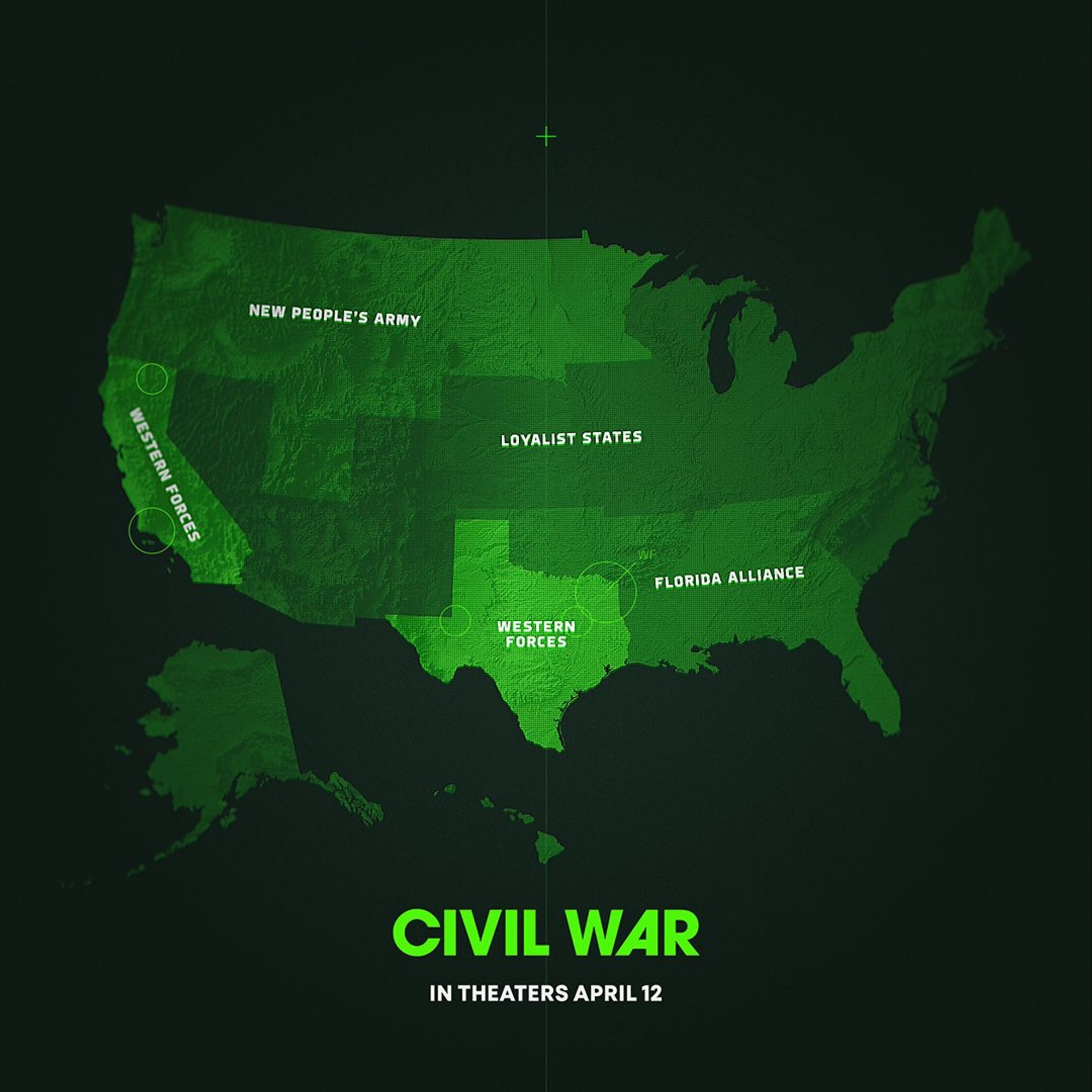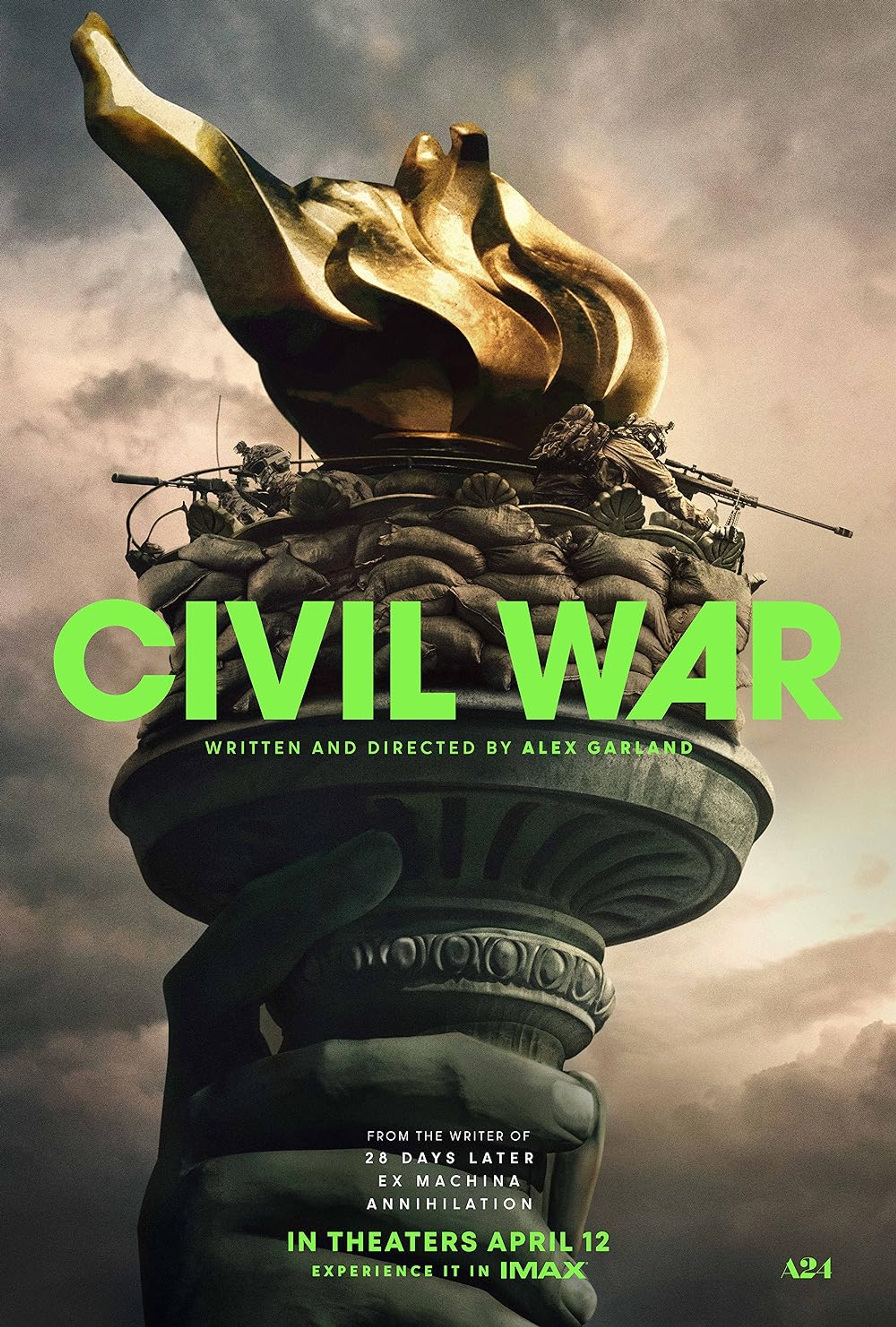Movie Review: Civil War
“What kind of American are you?”
In this new film from Alex Garland and A24, that question takes on a different meaning. Since 2020, when Garland began writing “Civil War,” political polarization and violence have only increased. Despite its initial trailer and release during an election year, “Civil War” does not address or provide any commentary about the country’s fraught political landscape. Instead, Garland depicts unconventionally divided states of America.
The United States has imploded. 19 states have seceded into three separatist groups. The “Western Forces,” an alliance between California and Texas, are closing in on the nation’s capital with the help of the “Florida Alliance.” Their goal is to oust the third-term president. The story centers around four war correspondents as the conflict nears its end. Lee is a photojournalist, famed for a photo she took at the “Antifa massacre.” She and Joel, a thrill-seeking reporter, work for Reuters. They are joined by Sammy, who writes for “what’s left of the New York Times,” and Jessie, an aspiring photojournalist who reveres Lee. They are trying to reach the White House in order to photograph and interview the president who is hostile to the press. “They literally see us as enemy combatants,” says Sammy. “They shoot journalists on sight.”
Departing from the moderate safety of New York City, the four reporters have to take an indirect route through Pittsburgh and West Virginia to reach DC. They make several stops throughout the journey. At a gas station. Lee bargains for half a tank of gas with $300 CAD, as $300 USD would only buy a sandwich. At another stop, a soldier holds them at gunpoint and asks, “What kind of American are you?” According to him, Lee from Colorado and Jessie from Missouri are real Americans. Joel from Florida is not.
Garland intentionally leaves out partisan politics with any semblance to reality. He keeps the context of the conflict vague and unspecified. For instance, the unnamed president is not affiliated with any party. As a result, “Civil War” is able to highlight the work of journalists. The four main characters repeatedly put themselves in harm’s way in pursuit of an opportunity they may die trying to reach. The violence that they face calls attention to the risks and challenges of reporting in the midst of a war. Furthermore, Lee’s harshened experience contrasted with Jessie’s naivete demonstrates the mental and emotional difficulties of witnessing and reporting on conflict zones.
Additionally, by not explaining how or why the country has reached this war-torn state, Garland can focus on the societal impacts of warfare. In the film, people have been fighting for so long that they have lost sight of the reasons they started fighting in the first place. Throughout their roadtrip, the four reporters encounter all manners of violence including torture, indiscriminate killing, and mass graves—none of which have a clear political purpose. A soldier under fire from a sniper has “no idea” who is aiming at him and explains “no one’s giving us orders… someone’s trying to kill us, we are trying to kill them.” Through this senseless violence, the film illustrates the dangers of conflict and ensuing societal collapse.
“Civil War” is a warning. Through the lens of journalism, viewers can watch what happens when social order disintegrates and trust in institutions is lost. Regarding her work, Lee says, “Every time I survived a war zone, and got the photo, I thought I was sending a warning home. Don’t do this. But here we are.” The one takeaway Garland wants viewers to have from his latest film: “aversion.”

